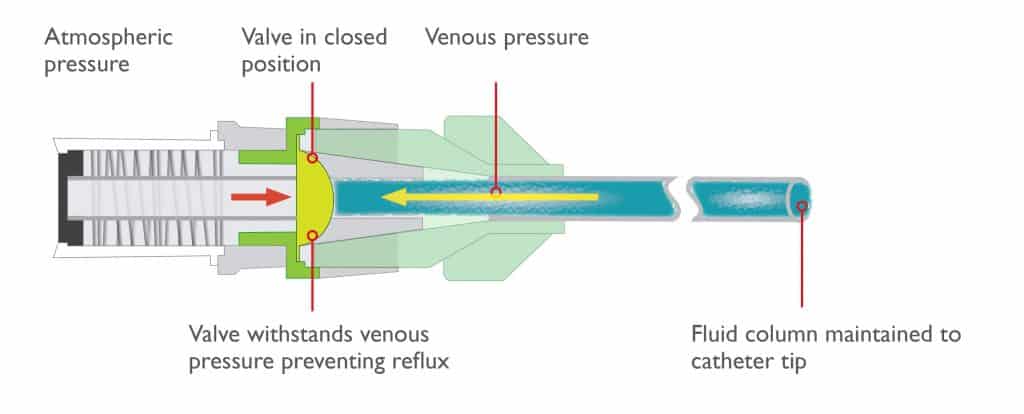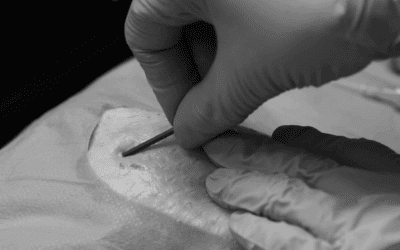Needle Free Connectors with a Bi-directional Valve have become a cornerstone in intravenous (IV) therapy. Their innovative design prevents blood reflux and significantly reduces catheter occlusions. This advancement brings numerous benefits to patients, clinicians, and healthcare providers.
Understanding The Bi-directional Valve Technology
These connectors are designed to prevent blood reflux and catheter occlusion; utilising pressure-activated anti-reflux valves, prevents blood from flowing back into the line during connection and disconnection. This innovative approach addresses common issues associated with traditional IV therapy methods.

The Bi-directional Flow
These connectors remain closed under venous pressure between accesses but open easily under the forces exerted during infusion, injection, or aspiration. This bi-directional control helps maintain catheter patency and reduces the risk of occlusion.
The Cost of Catheter Occlusions
Occlusions are a common issue in patients with vascular access lines. However, understanding and addressing these occlusions is crucial for improving patient care and reducing healthcare costs. The most common types of occlusions include:
- Thrombotic Occlusion: Occurs when blood or clotting agents accumulate inside the catheter.
- Persistent Withdrawal Occlusion: This happens when fibrin is aspirated into the catheter.
Benefits of Using a Needle Free Connector with a Bi-directional Valve on All Lines
Healthcare Provider Benefits
Occlusions can be costly for healthcare providers. Anticoagulant treatments are expensive, nursing time is increased, and lines may need to be replaced if they cannot be cleared. This not only strains healthcare resources but also adds to the overall cost of patient care.
From a cost perspective, the decreased usage of tissue plasminogen activator (tPA) and the elimination of heparin flushes in PICCs and Central Venous Catheters (CVCs) lead to significant savings. The reduced demand for solutions to dissolve blockages and flush out lines translates to lower operational costs. Additionally, the corresponding decrease in nursing time required for these procedures further enhances cost efficiency for healthcare providers.
Patient Benefits
For patients, occlusions can significantly affect their treatment and recovery. One of the primary advantages of using these Connectors is the reduction in catheter occlusions. This means patients experience fewer clinical interventions to unblock or replace lines, resulting in less trauma and a higher likelihood of receiving their prescribed therapy on time.
When treatment cannot be delivered as needed, patients may have to stay in the hospital longer, increasing their risk of infection. If the line cannot be unblocked, patients may need to undergo a second placement procedure, which can be both physically and emotionally taxing. The reduction in occlusions ensures a smoother and more reliable treatment process, enhancing overall patient comfort and satisfaction.
Clinician Benefits
For nurses and doctors, the time saved from not having to replace or unblock lines can be redirected to other clinical responsibilities. This efficiency not only improves workflow but also allows healthcare professionals to focus more on patient care and other essential tasks.
A Needle Free Connector with a Bi-directional Valve can offer a solution to these challenges by eliminating the need for heparin flushes in mid to long-term catheters like PICCs and Midlines. Its unique design leads to fewer clinical interventions and less trauma for patients, ensuring timely delivery of prescribed therapies. By incorporating these devices into vascular access protocols, healthcare providers can improve patient outcomes, optimise clinical workflows, and reduce costs associated with occlusions.
Conclusion
Implementing a Needle Free Connector with a Bi-directional Valve for all catheters is a critical step towards enhancing patient care and supporting clinical staff, while minimising complications related to IV therapy. Clinical evidence highlights the effectiveness of these connectors in preventing blood reflux and catheter occlusion, which leads to improved patient outcomes, optimised clinician workflow, and reduced healthcare costs, making them a valuable addition to clinical practice.


